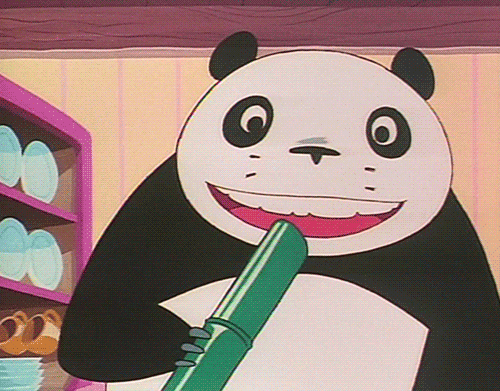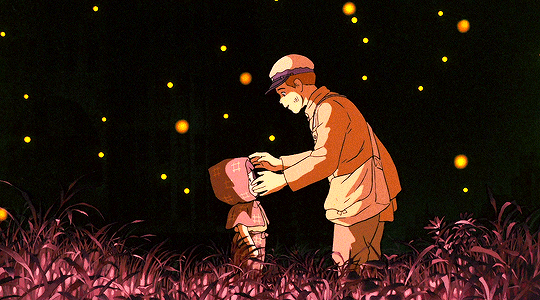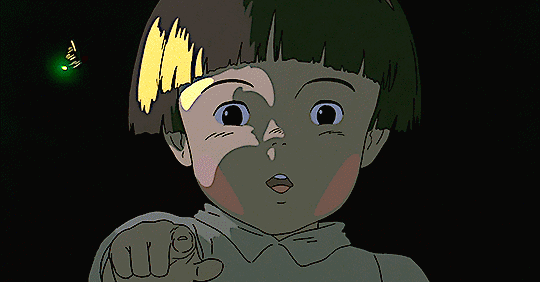originally posted at https://canmom.tumblr.com/post/687881...
Hello friends! It is That Night once again~
Tonight we have an Animation Night whose numeral is all 1s, which seems like some sort of significant occasion - indeed, the next time we can expect this kind of thing will be in another 111 animation nights. So, let’s watch something significant!

So tonight, we’ll be resuming our history of Hayao Miyazaki, Isao Takahata and Studio Ghibli! This picks us up from, ahem…
- Animation Night 41: Isao Takahata - a brief guide to Takahata’s career
- Animation Night 70: all right then Hayao, let’s do This - about Miyazaki and Takahata’s early years at Toei and the TMS orbit
- Animation Night 100: One Zero Zero - the founding of Studio Ghibli, and the big guys’ respective big jidaigeki films, Princess Mononoke and The Tale of Princess Kaguya
Tonight we’ll be returning to the earlier years of the studio, for what must be one of the most… conceptually jarring double bill premieres in film history: the night that people got to watch My Neighbour Totoro (となりのトトロ) and Grave of the Fireflies () back to back!
There are of course no Hayao Miyazaki characters more visually iconic than Totoro, who indeed quickly became the logo of Ghibli. A playful, fluffy round forest spirit who keeps an eye out for children, Totoro is very much an evolution of the design of the panda character in Panda Kopanda (1972), created by Miyazaki and Takahata back in their days at A-pro…

In 1988, Studio Ghibli had gotten off to a strong start. Their first two movies, Nausicaa of the Valley of the Wind (1984, technically animated at Topcraft, but created by the staff who would become Ghibli) and Castle in the Sky (1986), were both grand fantasy adventure movies. So both Totoro and Fireflies represented pretty large departures for the studio: for Takahata, it was his first time directing a full movie, and also a major break in terms of tone: a tragic realist war drama in a period when fantasy films were all the rage. For Miyazaki, it was a return to the more children-oriented works he’d made in his TMS days, but with his new extremely ambitious approach to animation. (Not everyone could, after all, rely on Yoshinori Kanada to take their key scenes!)
[Nausicaa, like Miyazaki’s previous The Castle of Cagliostro, can be placed within the broader trend of the rise of ‘bishōjo’ characters as an object of fan fixation, a subject I’ll be getting into when I write the next couple of posts in the evolution of the anime girl series but for now, see Watzky I guess!]
As much as these films seem incredibly different was that both centre on Japanese children in historical settings, and both deal in some way with death and grief. Miyazaki’s film represents a pastoral ideal of lost childhood in the countryside, overshadowed by the absence of a sick mother; the one crisis in the film comes when a child vanishes and everyone is afraid she might have drowned accidentally. Takahata’s film, meanwhile, follows children in the chaos of war in a fashion that can be compared Barefoot Gen (1983, Animation Night) - but this was Takahata’s big statement as a ‘realist’ director, and so aesthetically the approach it takes is quite distinct.

This is actually quite a significant occasion for me since, well, I haven’t actually seen Grave of the Fireflies! [note from the future: see this essay for my reaction after seeing the film, in comparison to Barefoot Gen and In This Corner of the World!] It’s one of the absolute biggest gaps in the Ghibli films I’ve seen. So to talk about it, I’ll have to turn to other writers. There is a fascinating article by Matteo Watzky which I keep coming back to, comparing the approaches of three ‘realist’ directors who work in animation - Satoshi Kon, Naoko Yamada and Takahata. In Watzky’s description, the ‘realism’ of Takahata, at least in this film, is a painfully beautiful approach to the way light falls on bodies and the detailed subtleties of acting, which are key to realising the film’s central symbol of a field of fireflies. Let me quote one of the most interesting passages from his essay:
Indeed, the set-up and its three layers (the flashback, the ghosts, and us the viewer) invite us to reflect not only on what’s happening, but on its consequences. The very choice of the medium of animation is also telling. Indeed, the moments when the choice of realism is the most striking is when we are shown close-ups of mutilated or dying bodies. One could argue that here, we are meant to witness the horror of war in detail and that realism is what makes us believe in what we see, and in turn react to it.
In fact, I’d say it’s the exact contrary. To understand this, we must reformulate my initial question : not “why realism ?” but “why animation, and not live-action ?” If this were live-action, we would indeed have no choice but to turn away our gaze in fear and horror (see, for example, the unbearable Hiroshima scenes in Shôei Imamura’s Black Rain). But since this is animation, these are just drawings and we know they are – which means that we don’t react to dead bodies as we would “real” people (that is actors) in agony. The distance created by the choice of the medium allows the gaze to be not pathetic or empathetic, but on the contrary, almost voyeuristic. There is indeed something profoundly upsetting about Takahata’s insistence on the degradations of the body, especially when said body is a young child’s. And I’d argue that this insistence is not meant to create pathos, but that it is cold and analytical – a study of death as it progresses in and on the body. This isn’t to say that Takahata is a sadistic director, who likes to torture his viewers with the sight of suffering : I believe that the distance created towards the pain on the screen invites the viewer to an even more critical look of Seita’s and Japan’s responsibility, and of Setsuko herself. Indeed, her dying body is not unbearable to watch – and precisely because of that, we have no choice but to watch, to be confronted to the utter horror that is her gratuitous death.

The same could be said of one of the movie’s climaxes and one of its most famous scenes – the fireflies sequence. We could say it is the culmination of the movie’s realistic aesthetic : the movements are slow and deliberate, the lighting is masterful and beautifully enhances the volume of the bodies – creating the all-important sense of presence. But at the same time, it’s the most unreal scene of the movie : the night setting, the overbearing music and the short-lived happiness all frame it like a dream. Even more importantly, the animation itself bears that contradiction : the light and shading on the bodies emphasizes the volume, but it does so to an unbelievably high degree, to the point that it feels like too much. We do forget that what we see are drawings, but what precisely are we seeing ? The two children look like real people as much as they do moving statues.
This way, Takahata, just like the two other directors I’m about to cover, doesn’t just follow the principles of realism. He either goes around them with the elaborate construction of a metanarration, or goes even deeper and surpasses realism at the same time that he’s following it. To put it in more abstract and energetic terms, he makes realism implode – that is, he destroys and transcends it from the inside.
So, what of the decision to place these two movies back to back? If Grave of the Fireflies takes such an approach to the responsibility of Japan for the deaths of these children, what does it mean to put it alongside Totoro? Does the contrast undercut the romantic setting of its companion film? Or do they complement each other, providing two different facets of the idea of ‘being a Japanese child’?
I’m honestly not sure, and that’s kind of why I want to recreate this double-bill: precisely to see the emotional effect of this unlikely combination (even if, of course, we can’t recreate the context of going to the theatre in Japan in 1988!). Of course rather than any artistic effect, part of the reason is financial: Ghibli was not yet at this point the juggernaut it became, so despite the difficulties of working on two films back to back, it was apparently judged the most profitable approach to direct two films at once.

Anyway, it’s about time I got started, but I wanted to make one last comment: Yoshinori Kanada (Animation Night 62, though god I need to give that one a proper writeup since it’s soooo cursory), the star ‘charisma animator’, returned once again, animating some of the most complex sequences of the film of the Catbus flying to the hospital. It’s interesting because the Ghibli models are quite a lot more complex than Kanada’s earlier preferences, although I think you can see some of that Kanada flair in the bus’s expressions, and of course he loooooved background animation and this sequence has plenty of that.
Even at this early stage in the lifespan of Ghibli, these films are also of course a statement in terms of character animation. Miyazaki and Takahata’s disdain for limited animation and the Mushi-pro lineage is infamous, and now with their own successful studio they finally had the ability to pour all the resources they needed into defining their own school. It’s not exactly Disney-like ‘full animation’, since it still made a certain use of the Kanada-school approach to lower framerates and expressive varied-tempo movement, and of course the layout system where animators are responsible for cuts rather than characters. But even so, Ghibli are quite distinctive within anime.
Their animation has a heavy emphasis on form - we come to understand Totoro through Mei’s physical interactions by bouncing on his belly. The way hair fluffs up, the detailed cel shading, the squashy mouths are all very distinctively recognisable as Ghibli hallmarks here.
And I think that’s all I have time to say. Why is there always such little time in the world? Oh, yeah, it’s because I stayed up all night writing about Umineko… 😅
Animation Night 111 will be live in just a minute, and films will start in maybe half an hour. Apologies, this is going to be running late again - hope you don’t mind staying up. We’ll lead with Grave of the Fireflies and follow up with Totoro - as brutal as it would be to go the other way around I think that’s probably the kindest option! So if you’d like to join, please drop in to twitch.tv/canmom sometime soon…
Edit: If you want to read something more substantial, I wrote a longer article comparing Grave of the Fireflies to two other films about children in the war, Barefoot Gen and In This Corner of the World! See here!
Comments